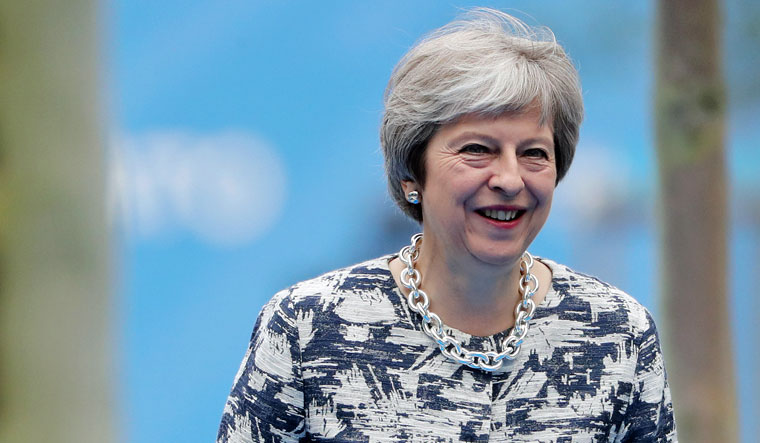British Prime Minister Theresa May published her blueprint for relations with the European Union after Brexit on Thursday, putting at its core a plan for a free trade area for goods that has angered many in her party.
In a long-awaited white paper policy document, her government said its negotiating position had “evolved” but that it was sticking to its principles for Brexit, the biggest shift in Britain’s foreign and trading policy in decades.
The 98-page document, which caused the resignations of two of her top ministers earlier this week, suggests the government is hoping to retain close ties with the bloc, participating in its agencies for chemicals, aviation and medicines.
Even before publication, it did not get a ringing endorsement from U.S. President Donald Trump, who said in Brussels he was not sure May’s new approach was what Britain voted for in a 2016 referendum.
There was one major shift - for Britain’s huge financial services sector, with the government abandoning plans for close trading ties favoured by the City of London in favour of a deal that offers flexibility but more limited market access.
“Leaving the European Union involves challenge and opportunity. We need to rise to the challenge and grasp the opportunities,” Brexit minister Dominic Raab, appointed to his position on Monday, wrote in the foreword of the document.
“This is the right approach - for both the UK and for the EU. The White Paper sets out in detail how it would work.”
With less than nine months before Britain is due to leave the bloc, May has been under pressure from businesses, EU officials and her own lawmakers to spell out her negotiating position to unblock the all-but-stalled Brexit talks.
She thrashed out an agreement at her Chequers country residence on Friday, but that was quickly undermined when two of her leading ministers, and Brexit campaigners, quit their jobs in protest at her plan to keep close trade ties.
Her team hopes the publication of the white paper will ease concerns among many Brexit supporters after the resignations of former foreign secretary Boris Johnson and former Brexit negotiator David Davis.
But the document, which spells out in detail where Britain hopes to maintain ties, might add fuel to a simmering rebellion in her Conservative Party.
It is also not clear whether the EU will accept the proposals. French Prime Minister Edouard Philippe said “the worst” scenario of Britain crashing out of the bloc without a deal was still a possibility.
CLOSE TIES
The white paper confirms May’s desire for a “business-friendly” Brexit, trying to protect manufacturers with complex supply chains across the EU which have warned a clean break would have cost British jobs.
Acknowledging that there will be more barriers to Britain’s access to the EU market than is the case today, the white paper goes on to detail a plan for a facilitated customs arrangement with the EU, one which would mean Britain would act as if it were in a combined customs territory.
It also details Britain’s desire to participate in EU agencies that provide authorisation for goods - the European Chemicals Agency, the European Aviation Safety Agency and the European Medicines Agency.
Britain would accept their rules and contribute to their costs, the white paper said, but recognising that Britain is no longer a member state.
While ending freedom of movement of people, Britain will try to ensure that tourists can travel freely around Europe and will try to make its immigration policy better cater for business needs.
It also proposes new bodies to help interpret rules and regulations and to resolve disputes, but says Britain will still pay due regard to the European Court of Justice.
But in a change that may anger financial services firms, the government said it would push to improve the EU’s legal mechanism for access to countries outside the bloc known as “equivalence” where access is patchy and can be revoked at short notice.
With the detail now published, May hopes to speed up the talks with the EU before Britain leaves in March next year.
But she may encounter resistance at home, where some Brexit campaigners in her party have described her proposal as a betrayal of her pledge for Britain “to take back control”.
Several will seek to harden her plan by changing her customs legislation in parliament next week.
Raab, May’s new Brexit minister, said such criticism was not justified. He described the white paper as “a vision that respects the result of the referendum, and delivers a principled and practical Brexit.”
—Reuters


